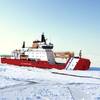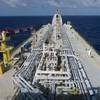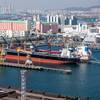Marine Fouling: Surface Texture Investigations May Provide Solution
Investigating surface texture could offer a non-toxic solution to marine fouling. Engineering and marine biology experts at The University of Nottingham Ningbo China are using innovative approaches to develop non-toxic solutions to the global problem of marine fouling, in the hope of reducing its environmental and economic costs.
Marine industries have long sought chemical solutions to the problem of marine fouling but now researchers at The University of Nottingham Ningbo China (UNNC) are using innovative approaches to look at how surface texture can be used as a non-toxic solution. Marine fouling occurs when organisms, including red and green algae, hydroids, scallops, mussels and encrusting organisms such as barnacles and tubeworms, attach themselves to submerged surfaces such as ships’ hulls or oil rigs.
For the first time, existing research on surface structures and their effect on organisms’ ability to attach has been reviewed and the UNNC research team is using this information to develop new surfaces that can be used to prevent marine fouling from occurring.
The team – made up of engineering and marine biology experts – will test surfaces in the water at Meishan Port, a new deep water port on the east coast of China close to where UNNC is based.
They hope that the work, which is a new line of investigation, will lead to the development of a surface that will provide a non-toxic solution to the problem of marine fouling, moving away from chemical-based solutions that have been investigated since the international ban on the use of tributyltin (TBT).
TBT is an effective but highly toxic chemical that was in widespread use until it was banned in 2008 due to its detrimental effects on marine life, which included severe deformities in shellfish and the accumulation of tin in other species.
The ban has led to significant effort being focussed on the search for an effective, environmentally friendly antifouling solution that can reduce the estimated US$1.5-3 billion spent a year on antifoulants and the repair and maintenance of offshore infrastructure required as a result of this natural phenomenon.
Marine fouling occurs worldwide and is an issue for most marine industries, from offshore oil and gas, to fishing equipment, to cooling systems, and can lead to huge economic and environmental costs.
On ships, for example, marine fouling can cause corrosion and deterioration of the hull, as well as increased friction, slowing the ship’s manoeuvrability and increasing drag and therefore fuel consumption. This increased fuel consumption and the output of greenhouse gases, causes environmental as well as economic costs.
The transportation of invasive species around the globe, which may then cause huge damage to sensitive ecosystems, has also been a serious side-effect of marine fouling that occurs on cargo ships.
Felicia Wong Yen Myan, a PhD student whose paper The interaction of marine fouling organisms with topography of varied scale and geometry: a review forms the basis of this line of investigation, said: “The huge environmental and economic costs associated with marine fouling mean it is crucial that effective, environmentally friendly solutions are found.
“Our research aims to find solutions that are capable of striking the balance between the economic needs of the aquaculture industry with the concerns of environmentalists, who are increasingly seeing the detrimental effects of invasive species being transported around the world.
“While a solution is a little while from being found, our research represents a definite shift away from chemical-based solutions to looking at how surface structures might contribute to a non-toxic way of dealing with marine fouling.”
This research reflects The University of Nottingham Ningbo China’s (UNNC) focus on working to contribute to China’s national priority to develop its marine economy knowledge and industry. A new £25m International Academy for Marine Economy and Technology will foster collaborations with industry, support China’s marine economy and contribute to the development of Ningbo’s port, which is one of the largest and most significant in the world.














